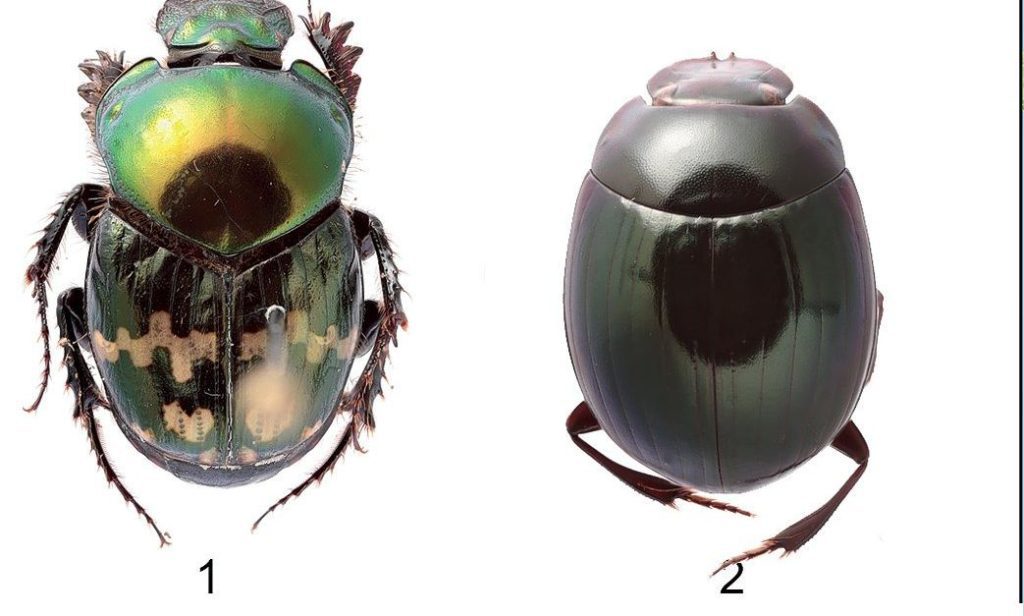Dung beetles can help hunt for lemurs in Madagascar, such as the ring-tailed lemur and the rare ring-tailed sifaka. Beetles are considered “reliable and cost-effective” in this regard. Russian biologists write this week In the Journal of Zoology ZooKeys.
They’re beautiful, Madagascar dung beetles: up to three centimeters in size, shiny as metal, iridescent as mother-of-pearl, and with legs like coal shovels. Together they clean up the feces of special mammals on this African island. In most cases, these animals are endemic: they are found only there. Most of them are threatened by poaching and deforestation. Thus the famous lemur, or lemur, in particular, has come into the worldwide spotlight.
Biologists want to determine where lemurs are still found, which species and how many there are — to assess not only the condition of those species themselves, but also the condition of their habitats. In this way they hope to better protect nature.
Russian researchers collected dozens of samples from four species of dung beetles (also endemic) and examined their intestinal contents. This contains DNA from the beetles themselves, from semi-digested plant remains from the feces, but also from the producers of that feces. However, this DNA is often largely broken down during digestion in mammals and dung beetles. This means you cannot assemble complete genomes (clusters of DNA) of plants or animals from it.
/s3/static.nrc.nl/images/gn4/stripped/data106844655-f89930.jpg|https://images.nrc.nl/F8-vnsLqX1Ar0-mqmkyYhqyKb_w=/1920x/filters:no_upscale()/s3/static.nrc.nl/images/gn4/stripped/data106844655-f89930.jpg|https://images.nrc.nl/1cQSzslfc3XfqwF30GWv7bew_UA=/5760x/filters:no_upscale()/s3/static.nrc.nl/images/gn4/stripped/data106844655-f89930.jpg)
Down to the species level
However, you can analyze parts of it. The question was, according to the article ZooKeys, whether those fragments are large enough to trace their owner down to the species level. This is indeed possible, as the research has shown: at least fifteen species of mammals have emerged from DNA analyses.
Some of these animals were rare lemurs, including the brown lemur, crested lemur, red-bellied lemur and crested sifaka. But another poo product came in at number one: Homo sapiens. Dung beetles in all areas, including a remote nature reserve in northern Madagascar, mainly ate human feces. Numbers 2 and 3 were beef and pork. DNA from mice and dogs was also abundant in the feces. Lemur DNA makes up only 5% of the total, while lemur dung has been the primary food for these beetles for millions of years.
This tells us a number of things, biologists conclude. First, this method is convenient and cost-effective for detecting lemur DNA down to the species level, even at very low concentrations. In their article, the Russians point out which pieces of DNA – relatively small and species-specific – are best used for this purpose. Another conclusion is that the diet of dung beetles has shifted almost entirely to waste producers with an affinity for humans: livestock, other domestic animals, introduced mice, and humans themselves. This says a lot about the state of the island’s ecosystems, according to the Russians. They hope that other biologists will also use their method to map it as a basis for conservation.

“Coffee buff. Twitter fanatic. Tv practitioner. Social media advocate. Pop culture ninja.”











More Stories
Which can cause an increase in nitrogen.
The Central State Real Estate Agency has no additional space to accommodate Ukrainians.
The oystercatcher, the “unlucky national bird,” is increasingly breeding on rooftops.